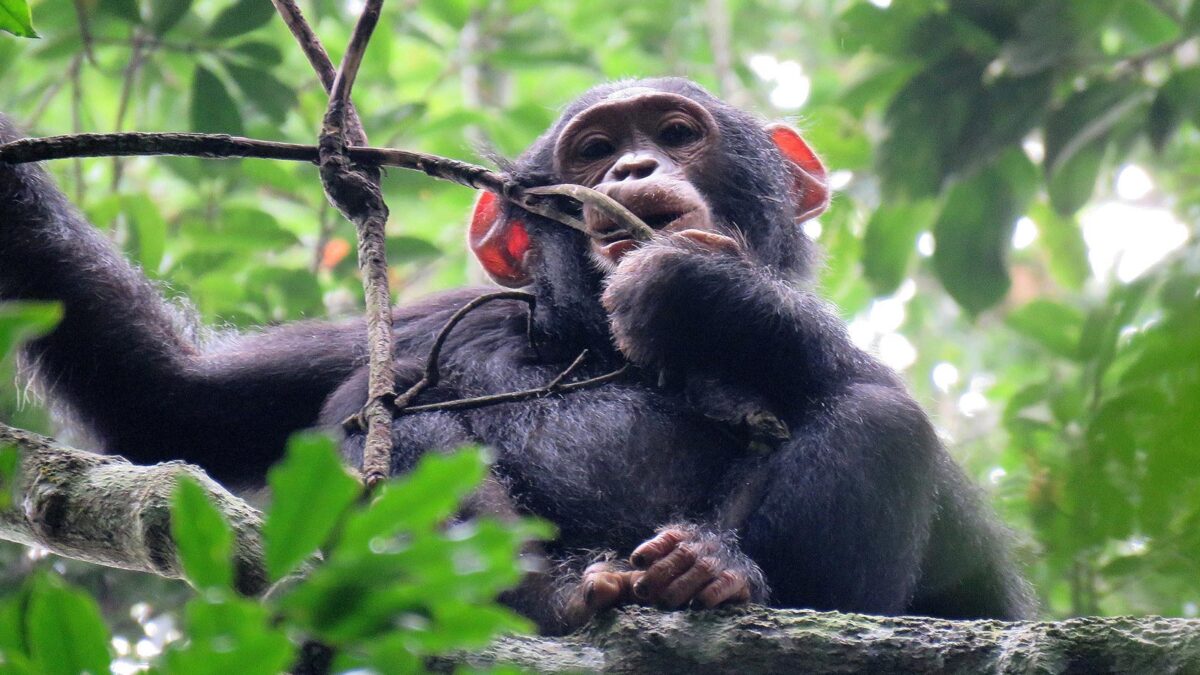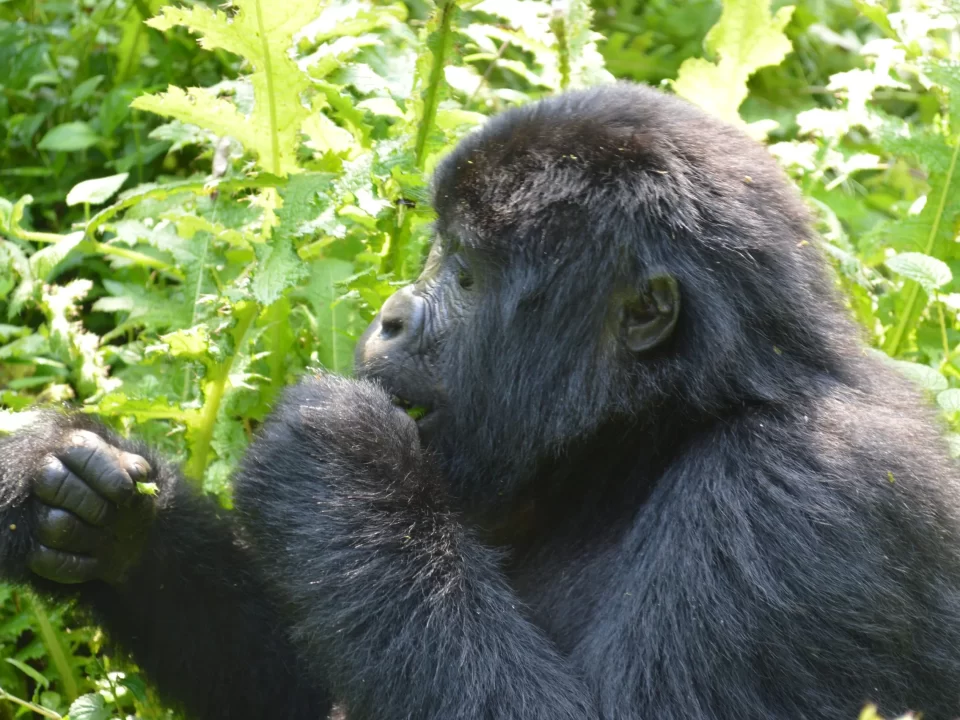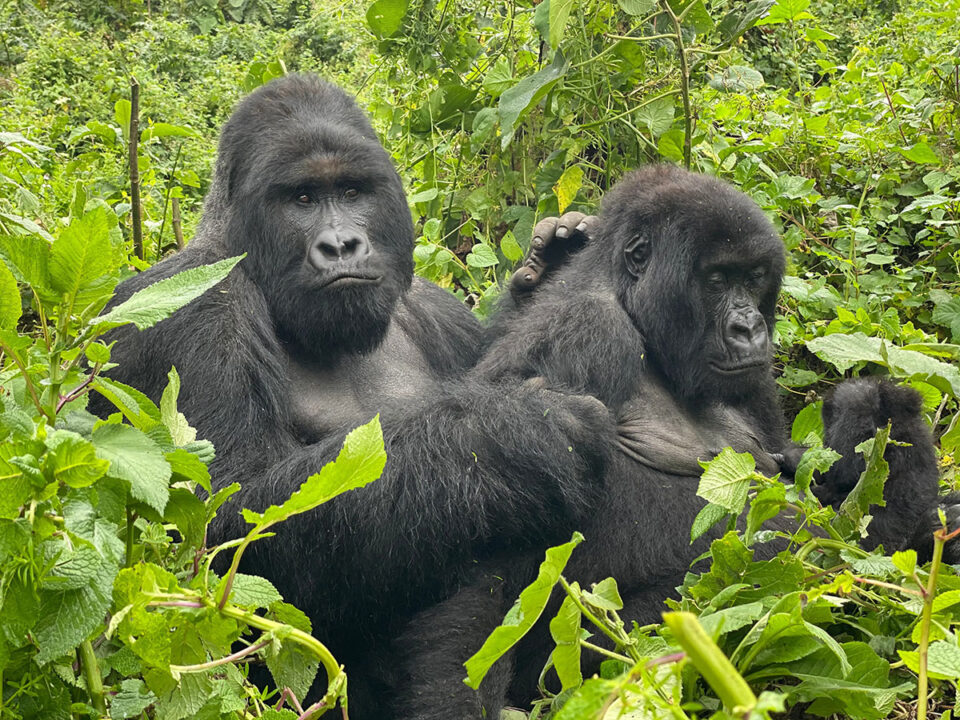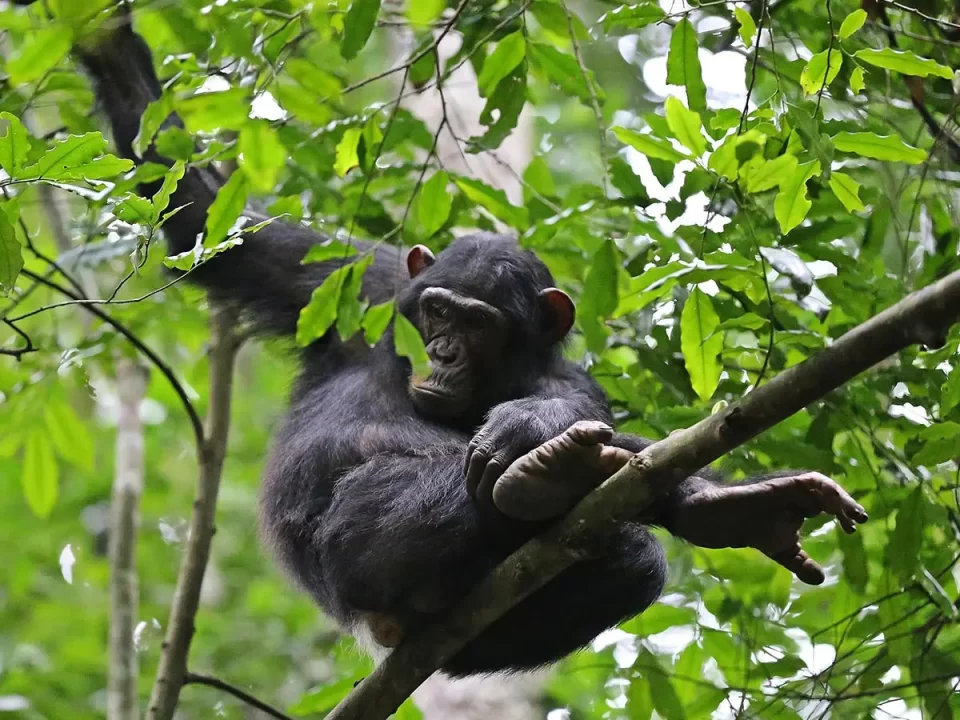Chimpanzee Trekking Versus Gorilla Trekking

Birding on Lake Victoria Shores
September 3, 2023
Uganda National Theatre
September 3, 2023Chimpanzee Trekking vs. Gorilla Trekking – Unveiling the Differences
When it comes to the thrilling world of primate trekking, two of the most captivating experiences are chimpanzee trekking and gorilla trekking. While both offer the opportunity to witness our closest relatives in their natural habitat, they present distinct encounters, each with its own unique charm.
The Arboreal Marvel: Chimps in the Treetops
One of the primary distinctions between these two treks lies in the primate’s choice of habitat. Chimpanzees, highly arboreal creatures, spend a significant portion of their day in the tree canopy. Witnessing these agile primates swing through the branches or meticulously construct their nests among the leaves is nothing short of fascinating. However, this arboreal lifestyle also poses a challenge: it can make spotting chimps a tad more challenging, hinder the capture of perfect photographs, and occasionally leave your neck aching from craning upwards.
Chimpanzee Trekking: A Symphony of Sound and Energy
Chimpanzee trekking brings a heightened sense of liveliness to the jungle. These primates are known for their vocal nature and spirited behavior. When you’re out in the forest with a group of chimps, you’ll find yourself enveloped by their animated interactions, and the experience is strikingly different from gorilla trekking. The forest resounds with their calls and movements, creating an atmosphere of excitement and engagement.
Terrain and Trekking Conditions: Chimps and Gorillas
The terrain and trekking conditions also set the two experiences apart. Chimp trekking generally unfolds on flatter terrain compared to gorilla trekking. While the forest can be dense and vegetation abundant, the trek is less strenuous. This grants you more time to immerse yourself in the lush surroundings, observe a multitude of bird species, and even catch glimpses of other monkey species.
Timing and Trekking Details
Much like gorilla tracking, chimpanzee tracking demands a permit, and there are daily limits to the number of permits issued. In destinations like Kibale, the maximum group size is capped at six guests per group. Unlike gorilla treks, which are often full-day excursions, chimp treks offer the flexibility of morning or afternoon visits. Some argue that mornings are better as chimps tend to be more active, but the afternoon encounters can be just as rewarding. Regardless of the time, sturdy footwear, layered clothing (including rain gear), and gaiters are essential for the trek. Tucking your pants into your boots can be a simple yet effective deterrent against safari ants, and gardening gloves can protect you from stinging nettles.
In summary, both chimpanzee and gorilla trekking deliver extraordinary primate encounters, but they differ in key aspects such as habitat, behavior, terrain, and trekking conditions. Whether you choose to trek with chimps in the treetops or share the forest floor with gorillas, each experience promises an unforgettable journey into the heart of Africa’s remarkable wildlife.




